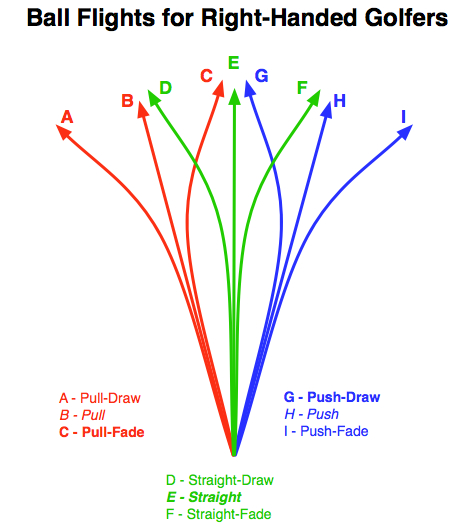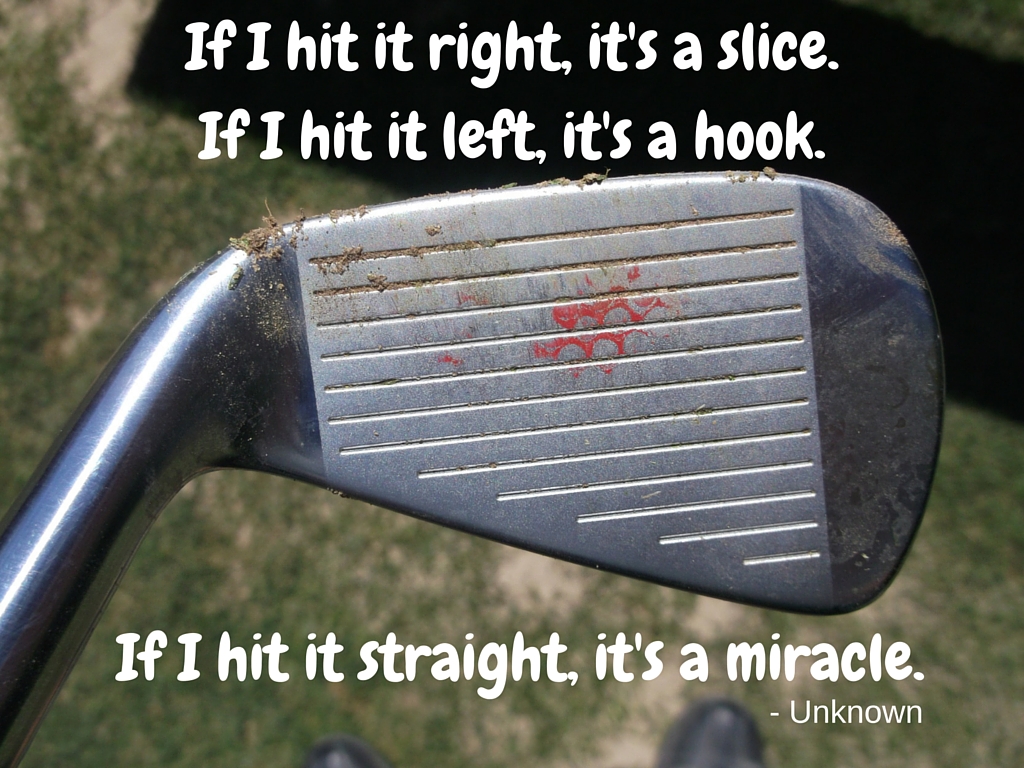The golf ball is the most important piece of equipment in all of golf. Even the golf course is less important than the golf ball, a golfer can hit golf balls anywhere, but can't even get off the first tee without a golf ball. The golf industry spends millions of dollars in research and marketing to convince the average golfer that their ball is the best one for them.
Most of my students play the brand of golf ball known as "whatever is in my bag". Cheaper is better and the found ball is best of all. I used to play in a skins game with a golfer that was renowned for identifying his lost ball as whatever ball someone found. These same players will work so hard and spend so much money to find the right driver, the perfect pair of golf shoes, that perfect set of irons, sunglasses, shirts, golf bag, posture, swing thoughts, grip size, or whatever, but continue to play the ball that happens to be in the bag.
Not all golf balls are the same! In some cases not all golf balls in the same box are the same, but that is improving. While all golf balls must conform to the same set of USGA rules, not all balls have the same personality. The built in personality of the ball is where the smart golfer looks to choose the correct ball for their style and ability. Pick a ball that has a personality that fits you. If every man or every woman looked identical you could still tell them apart by personality, and personality is what ultimately creates attraction.
I am not going to talk here about what technology in the design of the golf ball creates personality, their are plenty of places for you to research that. I am going to talk about what personalities are important, and how you can find the ones that are most to your liking.
For me the personality traits I look for are:
- Consistency
- Feel
- Ball Flight
- Putting
- Short Game Action.
CONSISTENCY: When I began golfing there was no one ball rule, play one ball tee to green then switch to a different ball for putting. Maybe play one ball off the tee of a par five but a different ball on a par three. I remember my grandfather and I sitting at the dining table sorting through a box or 2 of balls to cull out the imperfect ones. some balls were out of round and some were out of balance. Role a ball the length of the dining room table and you could actually see that is was not round. Float a ball in a tub of water with Epsom salt and you could see it had a definite heavy side. Sometimes half the balls in the box would be deemed unplayable! Today, if you play a major brand ball that lack of consistency is probably not an issue. Knowing your ball will react the same way every time is important.
FEEL: The moment of contact, the moment of truth is when the ball meets the club's face. Is it a sound you like, a through the hands up the arms to the brain comfortable natural feel? Is it a satisfying, confidence boosting and visceral sensation. Most important is it truthful and accurate? Is that feeling there with every shot and every club from driver to putter? You wouldn't wear shoes that don't feel right, why play a ball that doesn't.
BALL FLIGHT: For years club makers have been attempting to design and build clubs to match the swing traits of golfers. Slow swings, fast swings, smooth swings, choppy swings, solid strikers and golfers that it it all over the face of the club. For the most part the industry has been very successful and being fitted to the proper club for your swing can make a huge difference. Its only been in this century that a major manufacturer has been marketing balls with a variety of personalities to fit a variety of golfer traits, Bridgestone. However to this day Titleist claims that every golfer can successfully play their flagship ball the PRO V and the PRO V1. With a little research and some field work the average golfer can find the ball or balls that have the best chance of delivering the kind of ball flight they desire. Characteristics are engineered and built into the golf ball.
Examples of some characteristics and some of their effects are:
- Trajectory
- High flight for more carry
- Low flight for more roll
- Spin
- Low spin for straighter and lower
- Higher spin for more for more carry and curve
- Cover hardness
- Soft for more wedge bite
- Harder for more feedback
Notice I did not include distance as a built in personality! I do not believe any manufacturer sets out to build a shorter golf ball. There are trade-offs caused by the laws of physics; if you want a higher flight you are going to get less roll. Does that mean you will go farther or shorter with the high flyer? It all depends on the personalty of the golf course. You choice of ball must include an understanding of the golf course.
PUTTING: Balls do behave differently off the putter face. Harder balls give more feedback and softer balls seem to roll better (at least for me). Since half of the shots allocated to par are putting, it is worthwhile to find which ball, from the ones you selected from for three previous trials, work the best for you on the putting surface.
SHORT GAME ACTION: Oh my! This is all about personality and personal style. I frequently play with 2 very different golfers.
- Donny Bump and Run: Fly it low, land it short and let it run up. A 6 iron from 25 yards and in is not uncommon.
- Gary Grip It and Spin It: Get it in the air land it close and make it stop. A 6 iron, never from inside 155 yards.
Is one way better than the other? Yes Donny's way is better for him and Gary's way is the only way for him. Ball choice? Well for this shot at least the ball choice doesn't seem to have much impact on Donny, however Gary better have a soft covered high spin ball.
So how do you choose the right ball for you? Trial and error, repetition, asking friends, research and constant evaluation. For me I have narrowed it down to three balls:
- Titleist Pro V
- Bridgestone E6
- Wilson Duo or Zip, they seem the same to me.
When I am playing well and the weather conditions are good I will play the Pro V. The Titleist gives good control off the tee and awesome action around the green.
If its windy or its a tight course I play the E6. This Bridgestone gives me a confidence boosting straight ball flight. Playing the E6 I have to remind my self not to try to get cute, just hit it straight to the traget. The ball is good around the green and has a very nice feel when putting.
When I am not playing well I go back to the Wilson balls. Why? Well these are the softest balls I have ever hit and for me that just whispers softly, "Slow down, stupid." and wondrously my tempo relaxes and my rhythm returns. Also it is the best putting ball I have ever found.
Let me know what you play and why you chose it.





